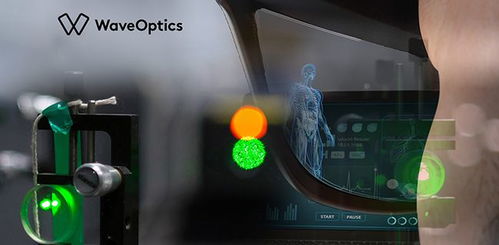Are you intrigued by the world of augmented reality (AR) and its fascinating optical components? If so, you’ve come to the right place. AR optics play a crucial role in shaping the AR experience, and in this article, we’ll delve into the intricacies of these components, their applications, and the latest advancements in the field.
Understanding AR Optics

AR optics refer to the optical components used in AR devices to create the augmented reality experience. These components include lenses, prisms, mirrors, and other optical elements that work together to project digital content onto the real world, allowing users to interact with both virtual and physical objects simultaneously.
Lenses: The Heart of AR Optics

The lens is the primary optical component in AR devices. It focuses incoming light and projects the augmented content onto the user’s field of view. There are several types of lenses used in AR optics, including:
| Lens Type | Description |
|---|---|
| Aspheric Lenses | These lenses have a non-spherical shape, which helps reduce distortion and improve image quality. |
| Free-form Lenses | These lenses are customized to fit the specific design of the AR device, providing optimal performance. |
| Micro-lenses | These tiny lenses are used in waveguides to focus light and create a clear image. |
Prisms and Mirrors: Enhancing the AR Experience

In addition to lenses, prisms and mirrors are essential components in AR optics. Prisms are used to redirect light and create the desired image orientation, while mirrors help reflect and amplify the light, improving the overall image quality.
Waveguides: The Path to the Eye
Waveguides are a critical component in AR optics, as they transport the light from the device’s display to the user’s eyes. These thin, transparent structures are designed to minimize light loss and ensure a clear, undistorted image.
Applications of AR Optics
AR optics have a wide range of applications across various industries. Some of the most notable include:
-
Consumer Electronics: AR glasses and headsets are becoming increasingly popular for gaming, entertainment, and productivity.
-
Healthcare: AR optics are used in medical procedures, training, and patient care to provide real-time information and guidance.
-
Manufacturing: AR optics enable workers to view and interact with digital information while working on physical objects, improving efficiency and accuracy.
-
Education: AR optics can be used to create interactive learning experiences, making education more engaging and effective.
Latest Advancements in AR Optics
The field of AR optics is constantly evolving, with new technologies and materials being developed to improve performance and reduce costs. Some of the latest advancements include:
-
High-resolution Lenses: New materials and manufacturing techniques are being used to create lenses with higher resolutions, providing a clearer and more detailed AR experience.
-
Waveguide Technology: Advances in waveguide technology are making it possible to create thinner, lighter, and more compact AR devices.
-
AR/VR Integration: Combining AR and virtual reality (VR) technologies is creating new opportunities for immersive experiences in various industries.
In conclusion, AR optics are a vital component in shaping the augmented reality experience. As technology continues to advance, we can expect to see even more innovative and efficient AR optics in the future, opening up new possibilities across various industries.










